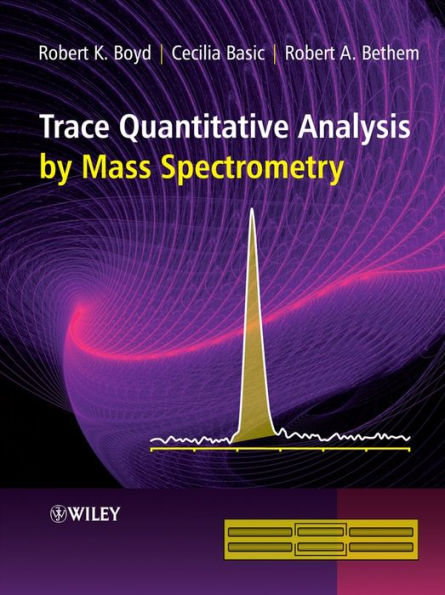The approach adopted throughout the book is to emphasize the fundamentals underlying the scientific instruments and methodologies, illustrated by historically important developments and more recent innovations. However, discussions of the fundamentals are reinforced and related to the real-world by two chapters dedicated to method development and validation. Finally, how "the fundamental things apply" to real-world problems is illustrated in the final chapter devoted to representative examples from a wide range of application areas.
This book does not cover important branches of mass spectrometry that provide accurate and precise quantitative measurements of relative concentrations, e.g. variations in isotopic ratios of an element by isotope ratio mass spectrometry and accelerator mass spectrometry. Rather, it is mainly concerned with determinations of absolute amount of substance, particularly for small organic molecules present at trace levels in complex matrices.
The book
- covers analysis of "small" ( 2000 Da) organic molecules, in environmental and biomedical matrices (trace level analyses of metals and other elements are not included).
- provides a comprehensive introduction to the ancillary techniques and tools, including statistical analysis, that must be coordinated to provide a reliable result for a trace-level quantitative analysis by mass spectrometry.
- discusses method development and validation, GLP, etc., in the context of a fitness-for-purpose approach that is applicable to any quantitative analytical method.
- written at a level that presupposes some basic undergraduate-level knowledge of chemistry, physics, and mathematics and statistics.
- treats the more recent developments in quantitative analysis of specific proteins in biological systems using proteolytic peptides as surrogate analytes.
Any book such as this can only be regarded as a preparation for the real learning process in this demanding practical art, namely "learning by doing" i.e. working on real-life problems in a laboratory. However, this book will be useful both in providing enough background information (“learning from others”) that the first exposure to the "learning by doing" process will not seem quite so daunting, and also will provide useful background for evaluation of new technologies as they appear.
The approach adopted throughout the book is to emphasize the fundamentals underlying the scientific instruments and methodologies, illustrated by historically important developments and more recent innovations. However, discussions of the fundamentals are reinforced and related to the real-world by two chapters dedicated to method development and validation. Finally, how "the fundamental things apply" to real-world problems is illustrated in the final chapter devoted to representative examples from a wide range of application areas.
This book does not cover important branches of mass spectrometry that provide accurate and precise quantitative measurements of relative concentrations, e.g. variations in isotopic ratios of an element by isotope ratio mass spectrometry and accelerator mass spectrometry. Rather, it is mainly concerned with determinations of absolute amount of substance, particularly for small organic molecules present at trace levels in complex matrices.
The book
- covers analysis of "small" ( 2000 Da) organic molecules, in environmental and biomedical matrices (trace level analyses of metals and other elements are not included).
- provides a comprehensive introduction to the ancillary techniques and tools, including statistical analysis, that must be coordinated to provide a reliable result for a trace-level quantitative analysis by mass spectrometry.
- discusses method development and validation, GLP, etc., in the context of a fitness-for-purpose approach that is applicable to any quantitative analytical method.
- written at a level that presupposes some basic undergraduate-level knowledge of chemistry, physics, and mathematics and statistics.
- treats the more recent developments in quantitative analysis of specific proteins in biological systems using proteolytic peptides as surrogate analytes.
Any book such as this can only be regarded as a preparation for the real learning process in this demanding practical art, namely "learning by doing" i.e. working on real-life problems in a laboratory. However, this book will be useful both in providing enough background information (“learning from others”) that the first exposure to the "learning by doing" process will not seem quite so daunting, and also will provide useful background for evaluation of new technologies as they appear.

Trace Quantitative Analysis by Mass Spectrometry
752
Trace Quantitative Analysis by Mass Spectrometry
752Related collections and offers

